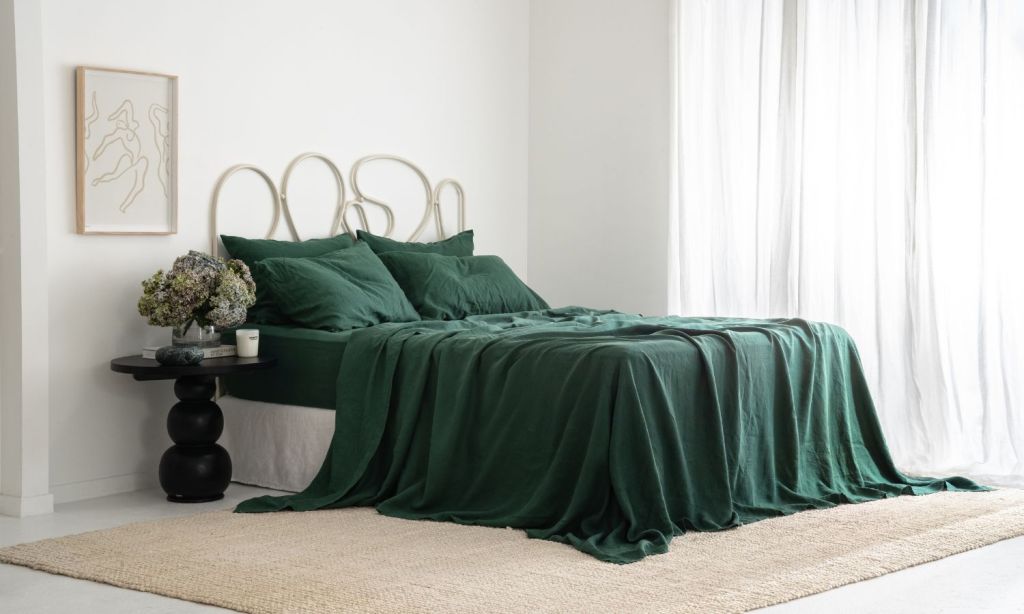Linen bedding is soft against the skin and breathable — so it’ll help you regulate your body temperature — and with its crushed, rustic look, it’s aesthetically pleasing. But, if you’re not used to having linen bedding, it can also be quite confusing to maintain.
If it’s white, can you bleach it like other fabrics? What water temperature does it need to be washed in? And can it be put in the dryer? Ahead, Lauren Roe, Creative Director from Australian bedding brand I Love Linen shares six expert tips for how to take care of your linen bedding.
Avoid Using Fabric Softeners
“Fabric softener often leaves a coating on fabrics, reducing breathability and absorbency in the case of linen,” says Roe. “Linen is known for its moisture-wicking abilities so dulling this natural talent is counterintuitive. On top of this, the coating left by fabric softener can reduce your linen’s lifespan by breaking down the fabric over time.”
All in all, linen naturally gets softer with every wash, Roe points out, so there’s no reason to potentially damage your fabric’s natural abilities by adding a fabric softener.
Related: How Often Should You Wash Your Clothes and Bed Linen?
Related: Avoid Going Full ‘Princess and the Pea’ With the Best, Softest Aussie Bed Linen Brands

Don’t Wear Skincare With Bleaching to Bed
Next? Avoid using bleaching agents on linen, or wearing skincare containing bleaching agents to bed, says Roe. Due to linen’s natural composition, its fabric is prone to fading and discolouration because of chemical exposure. Bleaching agents, including the bleaching agents that can be found in face creams and ointments, can be the cause of this chemical reaction.
“As with fabric softeners, bleaching agents can weaken linen’s natural strength, breaking down the fabric,” says Roe. “So, it’s best to keep your fresh linen away from bleaching agents.”
Avoid Direct Sun Exposure
Sunlight can also cause linen fibres to become brittle, weakening the fabric’s overall strength, she says. “Leaving your linen in the sun can often cause linen to turn yellow, if it’s white or off-white, sometimes leaving an irreversible discolouration,” she says. “It’s best to dry your linen in the shade and to avoid prolonged sunlight exposure.”
Use a Cool, Gentle Cycle
Linen is best cared for by selecting a cold-water gentle cycle on your washing machine and opting for a mild detergent, says Roe. A cold-water cycle is gentler on your bed linen than a warm water wash, helping to preserve the colour of your fabric and avoid shrinkage, she says.
Line Dry in the Shade
“Linen fabric prefers to be dried naturally,” Roe says. “It’s best to avoid using a tumble dryer as the heat and motion can create wrinkling in your fabric and may, over time, also weaken the fabric.”

Of course, there are times when you may have to use a dryer because you’re short on time. If that’s the case, use a low heat setting and remove the sheets from the tumble dryer as soon as they are dry, as this will help to avoid any set-in wrinkling that could otherwise occur.
Have More Than One Set
Finally, while linen sheets are a durable bedding option designed to be used for years, the more you use your linen bedding, the more the fabric will wear down. So, Roe suggests having several sets and swapping them over when they are due for a wash.
Read more stories from The Latch and subscribe to our email newsletter.







